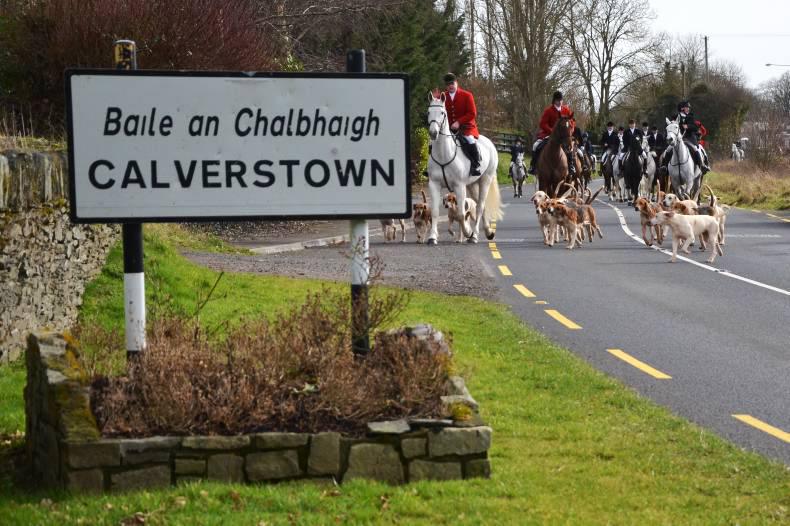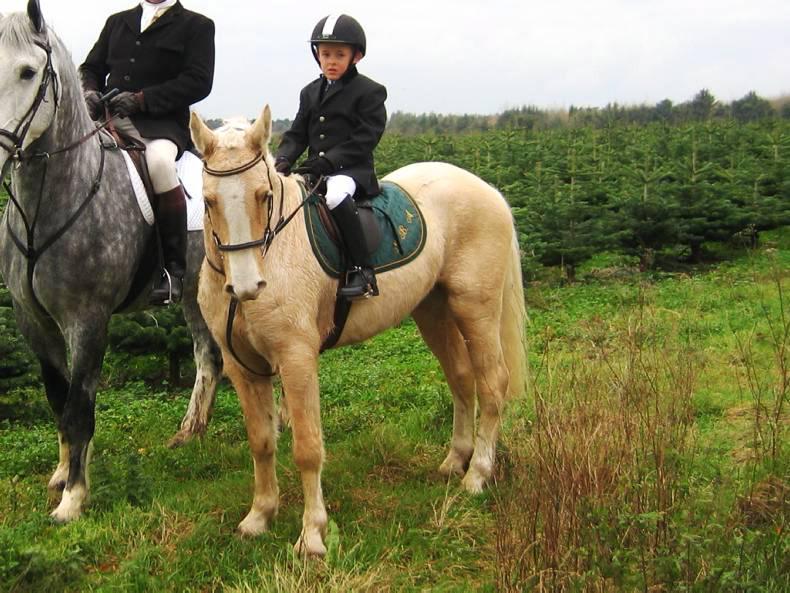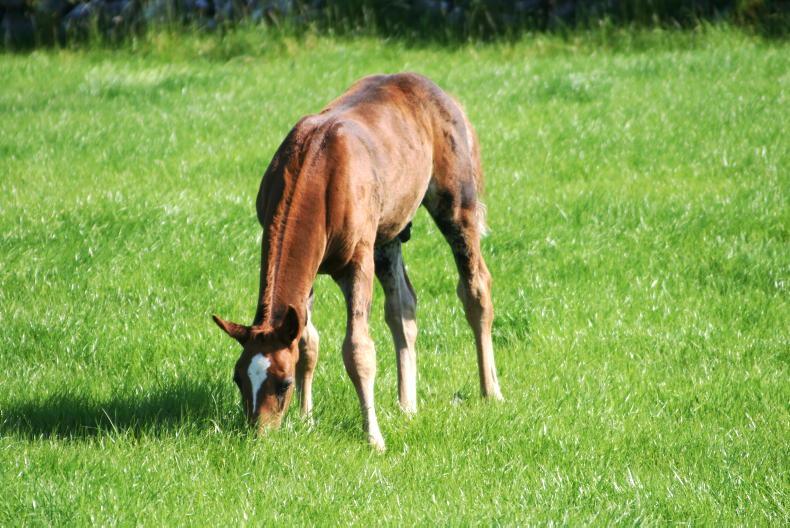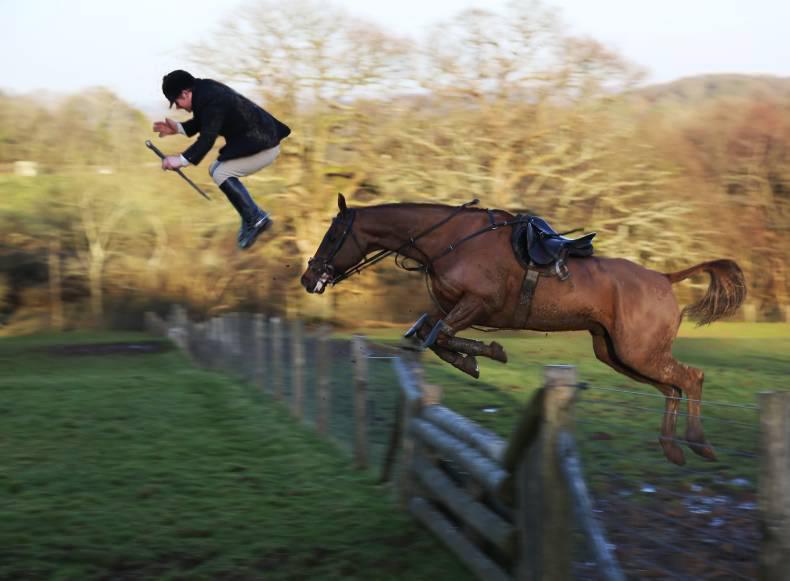MODERN equestrian sport has evolved greatly over the past number of years. To be at the top you need nerves of steel, unwavering skill, impeccable horsemanship and a brave talented horse. Where better to develop these attributes then on the Irish hunting fields?
The rush of a chase over a challenging landscape would test any horse and rider and many professional equestrian sports personalities have honed their talents on their local hunting fields. Leading Irish show jumper Bertram Allen and top jump jockey Paul Carberry are just two examples.
Hunting with hounds is a tradition in Ireland that goes back to ancient times and is used as a method of controlling the population of quarry species. Before a hound enters the pack, never mind sets foot on a hunting field, a lot of work and preparation has to be done.
The Kildare Foxhounds are renowned all over the hunting world as professional huntsmen and women. Heading up the hunt for the past seven seasons is huntsman Chris Francis. Prior to his time in Kildare, Chris whipped-in eight seasons with the Ballymacads and the Taunton Vale hunt in England. Therefore, I think it is safe to say that he is well-qualified to speak with authority on fox hunting.
AUTUMN HUNTING
The official start of the hunting season is May 1st. At this time of year employment contracts are signed and preparations begin for the first hunt. In Ireland the initial hunts are known as autumn hunts. Autumn hunting (September and October) can start anytime after 6am and normally lasts three to four hours.

Autumn hunting is an important rite of passage for all young hounds - it teaches them how to hunt. Pups are born between Christmas and March, but usually closer to March. They stay at the kennels until they are eight to 10 weeks old.
They are then given out in couples to walkers (members of the hunt who will be responsible for the early handling of the hounds). The hounds stay with their walkers as long as possible or as Chris says “until they become a nuisance.”
Walkers can usually manage the hounds until they are about six months old. It is at this stage that they return to the kennels. Upon the puppies’ return to the kennels, they are paired up with an older more experienced hound, when exercised, for approximately a week to 10 days using a coupling chain. “Young hounds take knowledge from the older hounds,” says Chris. Following this the young pups will be paired-up together. This is done to re-enforce the necessity that they stay together and work as part of a pack.
Autumn hunting also serves another purpose, in that it allows the country to be hunted prior to the opening meet. This is done to ensure that the fox gets used to running. Initially a fox won’t stray far from earth (their den). By hunting the coverts early on, the fox will get used to running. During autumn hunting the huntsman will try to get around as much of the country as possible.
THE PUPPY SHOW
Not long after the young hounds have returned to the kennels they are re-united with their walkers for the inaugural hunt puppy show. This is an opportunity for the walkers to showcase the hounds they have looked after and for the hunt to showcase their new entrants. The hounds will be judged by hunting experts from around the world. This year the Kildare Hunt will welcome a judge from France to their puppy show.
GOODWILL AND GRATUITY
Other hunts can come to view the young stallion hounds at the puppy show. Often hunts may wish to use hounds from another hunt as part of their breeding programme.
Chris Francis explains that hounds carry no monetary value. The Kildare hunt breeds between 20 and 50 hounds each year and the goodwill and gratuity between huntsmen is such that there is no fee for covering hounds from another hunt. If huntsmen find themselves short of pups they know they can call on a neighbouring hunt for help.
OPENING MEET
This is the “formal start to the season” and will usually take place during the last week of October. The Kildare’s opening meet takes place at their state-of-the-art kennels in Punchestown. Hunting in Kildare will finish for the season in February. This might seem early but Chris explains that “in Kildare it would be difficult to get permission to hunt after this time because of the beginning of the lambing season.”
The Kildare Hunt fixtures are presented to members on a hunt card and hunts run from opening meet to Christmas and from Christmas to February. The Kildares will have approximately 60 meets per year and hunt three times a week (Monday, Thursday and Saturday) “except when there is racing on in Punchestown,” reports Chris. “The hunt owns the racecourse, so we don’t hunt when racing is on. This allows our members to support Punchestown.”
THE OFF-SEASON
When the hounds finish for the season and are being rested the hunt staff’s work mainly involves covert management. The Kildare hunt owns 12 coverts in different parts of their hunt country. Managing the coverts would involve cutting trees to ensure covert growth on forest floors - this is necessary to provide quarry with the right habitat in which to live.
The covert will then be reduced enough for the hounds to get through after there has been some hard frost at the beginning of winter. Hunt staff might also be putting up hunt jumps and fixing gates so that they can avoid cutting wire when out hunting.
Chris Francis explains that: “The Kildare Hunt has a great relationship with local farm owners. We would often meet with them to discuss our plans and we would seek their permission to put in hunt jumps where necessary, to avoid any damage to their fencing.
“We could have anywhere between 50 and 60 people attending any one of our meets, so before each meet we would visit the farmers in the area to notify them that we will be on their land. We also use a warning card system. These are delivered to residents in the wider surrounding area. These cards detail the time and date we are hunting and are an effort to be courteous and mindful to those in the area.”
THE KILDARE FOXHOUND
There are two main types of foxhound - the Old English and the modern foxhound. In Kildare the pack is made up mostly of modern foxhounds as opposed to the Old English foxhound. The Old English is a strong, stocky hound whereas the modern foxhound is described as being not as heavy-framed with bone.
In Ireland today there are still some hunts which will only use Old English foxhounds because they are what’s required to hunt a specific type of country. Hunts holding this view include the Louths, Duhallow and Limerick, according to Chris.
For spectators it can often be difficult to ascertain if the hounds are hunting. Chris explains: “Hounds hunt by sense as much as by scent. They can sense if there is a fox. I can tell they are hunting by their different attitude and how they are acting towards each other. The hounds will be keen when they enter a covert. There will be no delay if a fox is present.”
When asked about the male-to-female ratio, Chris explained that some hunts will mix-hunt males and females, while some will hunt the males together and then the females together. There is a view that the male hound will be steadier on a line of scent in heavy coverts, whereas the female hound is thought to be faster and therefore better hunted in wide-open country.
Chris says he likes to have the best of both worlds and that is what works best for him. The Kildares have 20 couple dogs and 21 couple bitches. Without a healthy pack of hounds there would be no hunting.
A hound’s pads need special care and attention. Chris says: “We often find that the hounds will get a thorn in their paw and will go lame. To ensure the hounds’ health and well-being we keep the kennels very clean, washing the floors and checking the hounds individually on a daily basis.”
SCENTING CONDITIONS
“The quality of hunting really does depend on the scenting conditions. As a rule of thumb if the weather is mild it is going to be difficult for the hounds to pick up a scent. Heat rises and with it will be the scent,” explains Chris. When it is cold and there is high pressure the hounds have a better chance of picking up a scent. “People often try to predict if it is going to be a good day by how the air feels but there is no real way of telling. In my experience the only days I have been able to successfully predict that it is going to be a good hunt is when there is fog or just before it is about to snow.”
I would like to thank the Kildare Foxhounds for allowing me to observe a morning’s autumn hunting and especially Chris Francis for taking the time to talk about his job and life as a huntsman. I wish the Kildare Foxhounds a good season’s hunting.
READ MORE


 This is a subscriber-only article
This is a subscriber-only article
 It looks like you're browsing in private mode
It looks like you're browsing in private mode











SHARING OPTIONS: